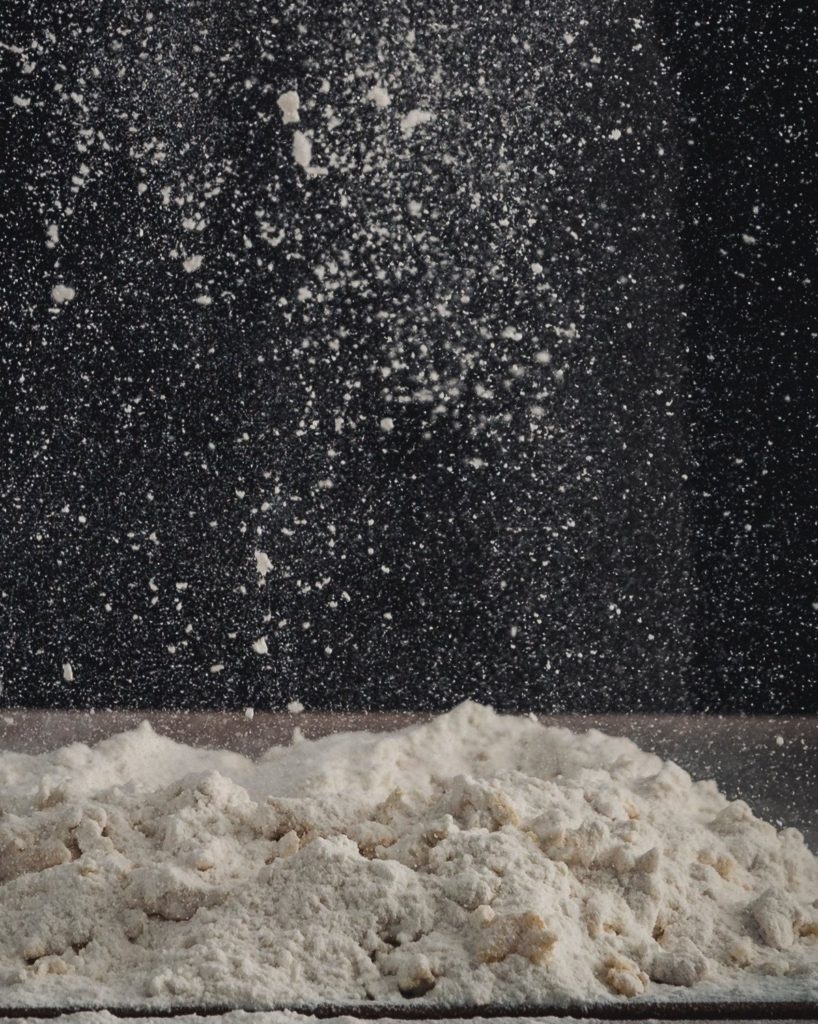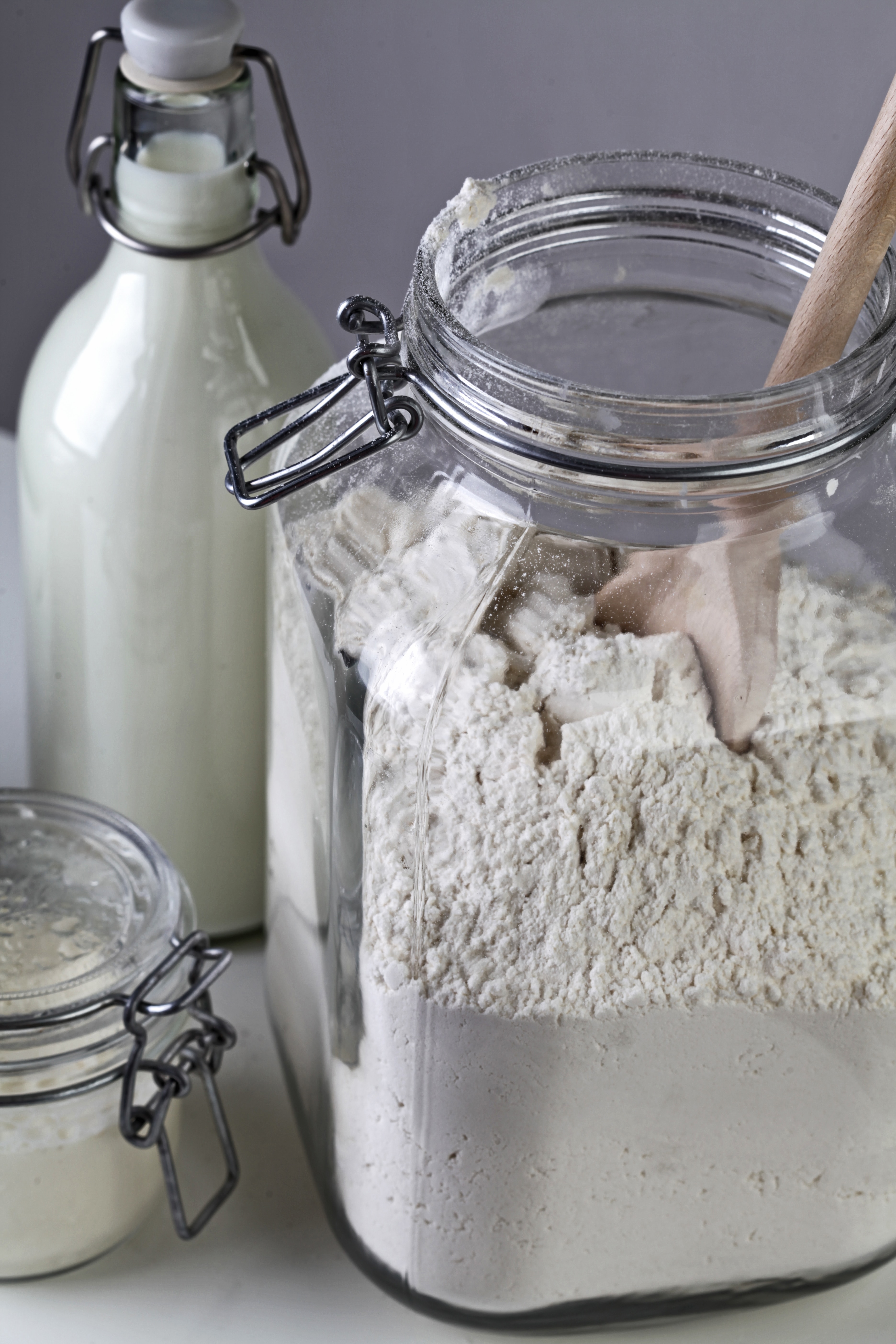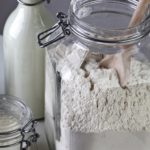I was given a sourdough start from a friend about 18 years ago. When we decided to build a home and live in our camp trailer there wasn’t room in the fridge for it, so I had to throw it out. Sad day! When I was looking for my homemade bread recipe the other day I ran across all my Sourdough recipes and decided that making your Sourdough start would be a great beginning. Thankfully, getting a new Sourdough start is an easy task for those who don’t have the opportunity to have one passed down through generations.
Jump to RecipeA fun little history fact: Sourdough is the oldest form of leavened bread. It can be traced back to use as early as ancient Egypt around 1500 BC.
So, what is Sourdough? I ran across this information from Chef Cookie Soles: Sourdough Turns Carbohydrates into Proteins? “I would like to share a bit of research I came across recently concerning “Sourdough”. What originally caught my eye was an analysis of laboratory tests. They say that Sourdough contains the greatest amount of protein for its weight and size of any comparable food. “Hmm,” I thought “just how does that come about when it’s ingredients are all carbohydrates?” Apparently, wild yeast forms in the fermentation process of the starter. At that stage, starchy food is turned into a protein dynamo food. Taken from: https://www.kitchenproject.com/history/sourdough.htm
There are two ways to begin your new Sourdough start. The first is a 5-6 day process of fermentation and feeding and the second is a simplified version. From all my research and from what I have found about Sourdough, the more fermentation you can create in your start the better your start will be. With that being said, I am all about simplicity, so, let’s begin with the simple version. Watch for the 5-6 day process to come.

New Sourdough Start
Ingredients:
1 (.25 ounce) package active dry yeast
2 cups all-purpose flour
2 cups warm water
Directions:
1- in a large non-metallic bowl, mix 1 package active dry yeast, 2 cups warm water and 2 cups all-purpose flour. Leave in bowl or place into a glass jar. Cover loosely.
2- Leave your start in a warm place to ferment, sit your jar or bowl on a cookie sheet in case of overflow. Check daily. This process takes about 4-8 days. This time is dependent upon the temperature and humidity in your kitchen.
3- When your mixture is bubbly and begins to have a pleasant sour smell it is ready for us. If your mixture has a pink, orange or another strange color tinge to it, Throw it out and start over.
4- Keep your sourdough start in the refrigerator until ready to use.
5- When you use your starter for baking, always replenish your mixture with equal amounts of flour and water with a pinch of sugar. For example: if you use 1 cup starter replace 1 cup water and 1 cup flour to your mixture. Mix your starter well and leave on the counter until bubbly again, then replace in the refrigerator.
*Note: if a clear to light brown liquid has accumulated on top, don’t panic, this is an alcohol-based liquid that occurs as your mixture ferments. Just stir the mixture well.
*Tip: Sourdough starters improve as they age which is why starts were passed from generation to generation and why getting a start from a family member or friend is the preferred way to get a start. However, when that isn’t an option, begin your Sourdough start and tradition to pass along to your friends and family.
A few hints about your Sourdough Start
- If your start separates or water begins to form on the top, stir well and add a little flour to make your batter smooth again
- Leave at least 1 cup of starter to renew
- Add equal amounts of flour and water 1-2 nights before you use your start to replenish before use
- Sugar is used to boost the enzymes, not for sweetener. Too much sugar in your start will make your mixture rubbery.
- Cover your Sourdough start lightly to allow air to get to your start, don’t seal it
- Sourdough can be kept in the fridge when not in use. When you plan to use it let it sit out for a day at room temperature for the enzymes to begin working again
- 68-77 degrees F is your Sourdough starts ideal active temperature
- Do not use metal bowls or spoons in your Sourdough start. Glass jars and wooden spoons are highly recommended.
New Sourdough Start from Scratch
Materials
- 1 (.25 ounce) pkg Active Dry Yeast
- 2 cups All-Purpose Flour
- 2 cups Warm Water
Instructions
- In a large non-metallic bowl, mix together 1 package active dry yeast, 2 cups warm water and 2 cups all-purpose flour. Leave in bowl or place into a glass jar. Cover loosely
- Leave your start in a warm place to ferment, sit your jar or bowl on a cookie sheet in case of overflow. Check daily. This process takes about 4-8 days. This time is dependent upon the temperature and humidity in your kitchen
- When your mixture is bubbly and begins to have a pleasant sour smell it is ready for use. *NOTE: If your mixture has a pink, orange or another strange colored tinge to it, THROW IT OUT and start over
- Keep your Sourdough start in the refrigerator until ready to use
- When you use your starter for baking, always replenish your mixture with equal amounts of flour and water with a pinch of sugar. For example: if you use 1 cup starter; replace 1 cup water and 1 cup flour with a pinch of sugar into your mixture. Mix your starter well and leave on the counter until bubbly again, then replace in the refrigerator

